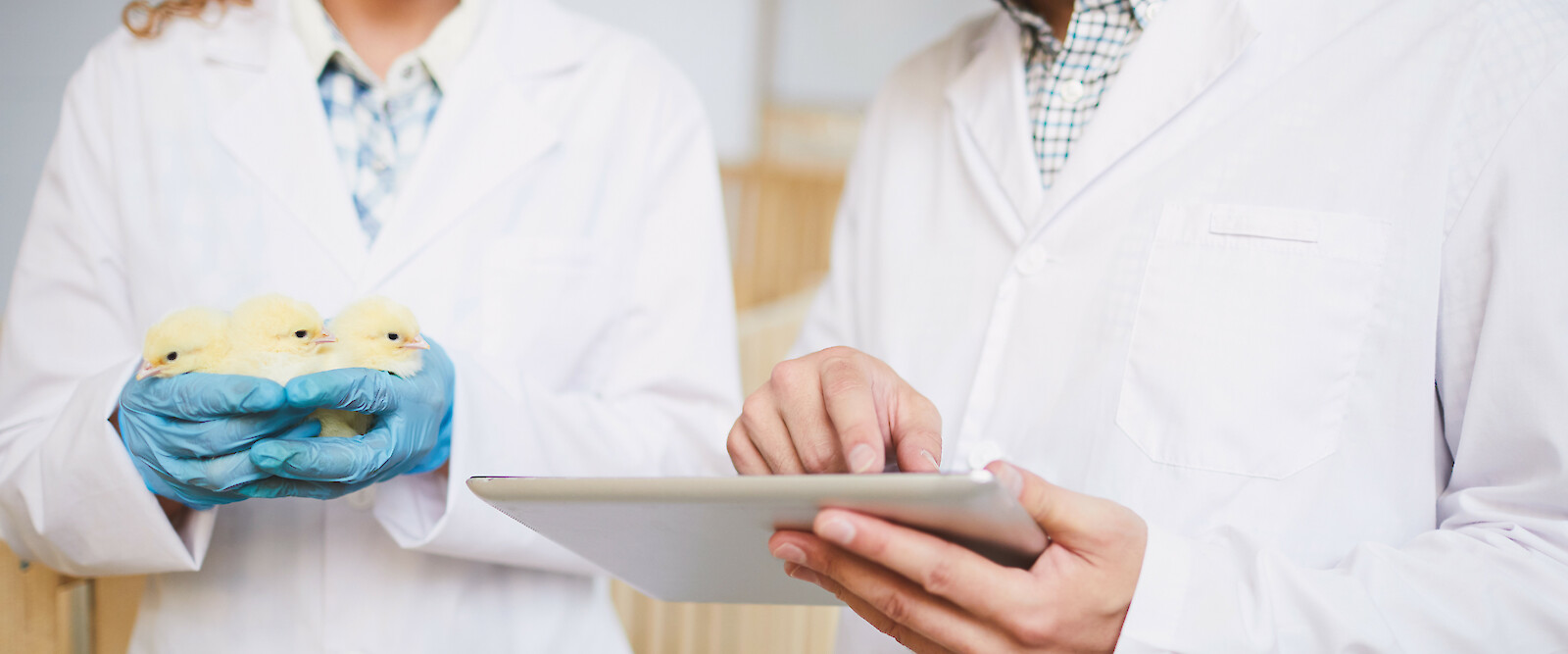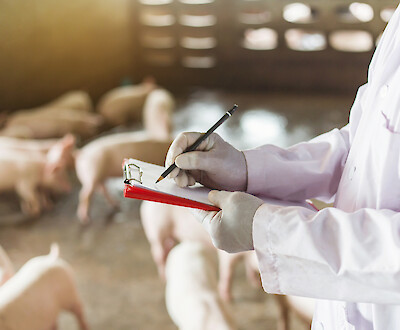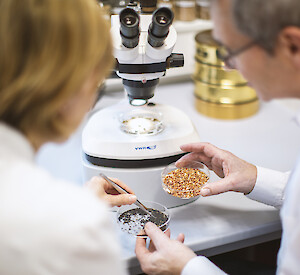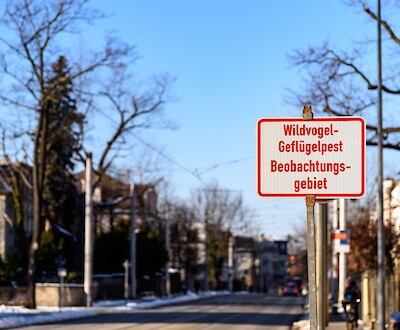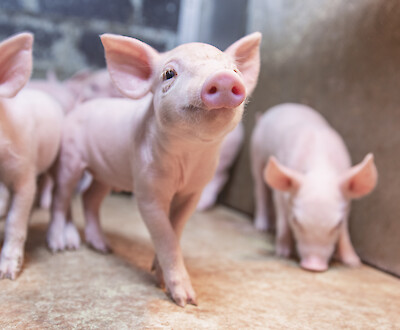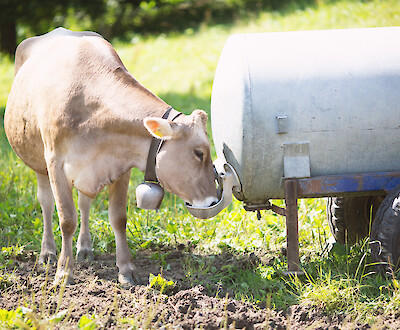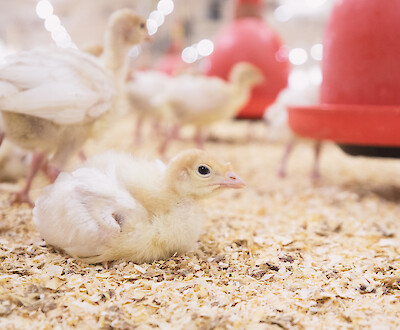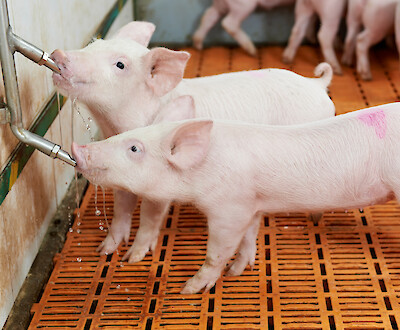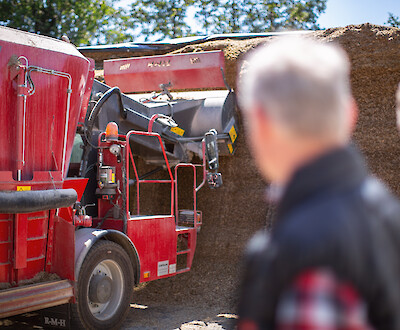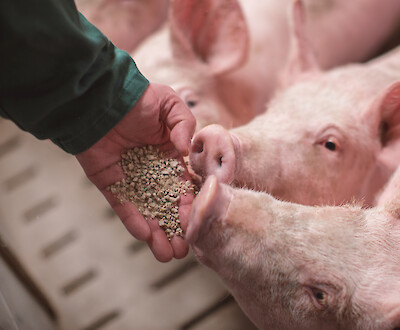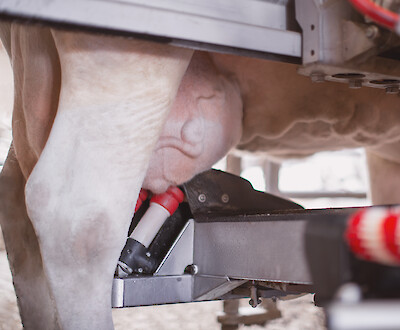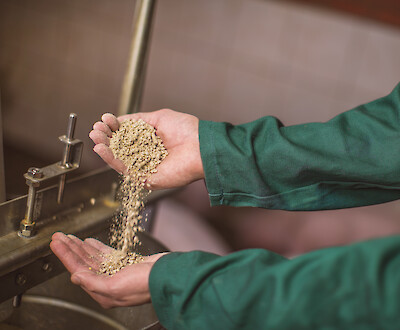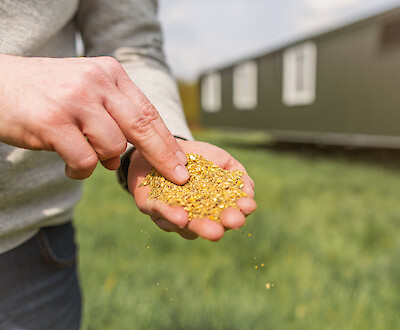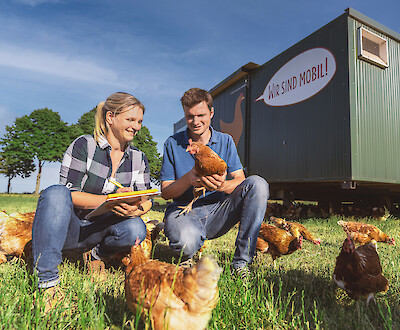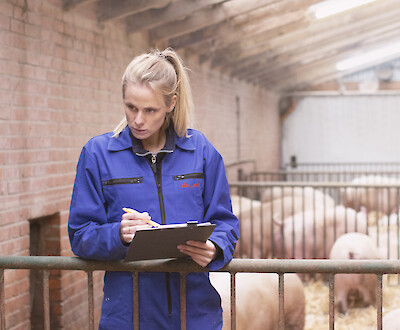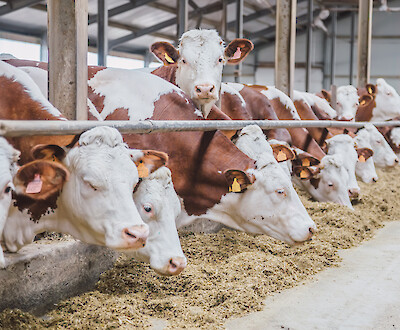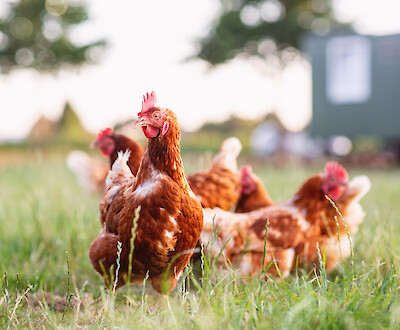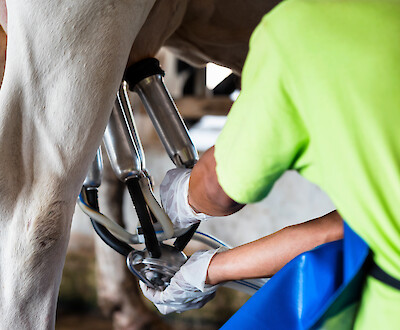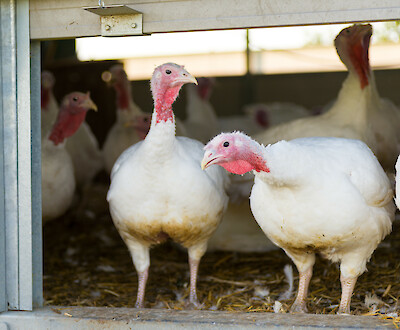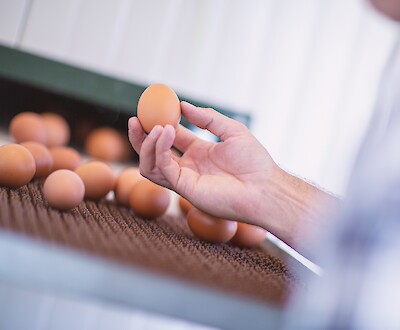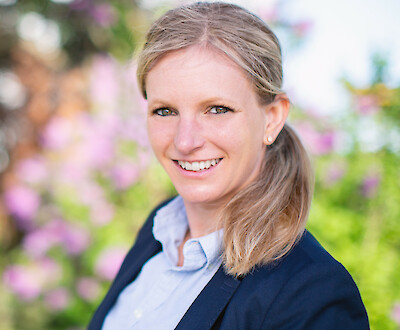Salmonellosis: Risks and solutions against an infestation in chickens, turkeys & Co.
What to do against salmonella in poultry?
An infestation with salmonella is a serious threat to farms with poultry flocks. Due to the health risks for humans caused by a salmonella infestation, strict regulations exist. This can lead to financial consequences for affected farms. To ensure food safety and consumer protection, the commercial keeping of chickens, broilers and turkeys is subject to the Poultry Salmonella Ordinance. This obliges companies to carry out regular inspections. Modern husbandry systems, combined with high standards of hygiene, can prevent contamination of animal foodstuffs and minimize risks to livestock.
Salmonellosis: zoonotic, notifiable disease with consequences.
An infection with salmonella is called salmonellosis. The disease is one of the zoonoses, i.e. it can be transmitted from animals to humans. An infection is conceivable via contaminated eggs and contaminated meat. For this reason, salmonellosis is a notifiable disease in Germany (see §6 / §7 of the Infection Protection Act). Due to regular reports in the media, poultry meat, eggs as well as egg products are subject to special observation by consumers.
Poultry Salmonella Ordinance: legal framework for commercial poultry farming
The Federal Institute for Risk Assessment (Bundesinstitut für Risikobewertung, BfR) has issued various recommendations for the different types of farm animals. The primary goal of these recommendations is the safe production of food while preventing contamination with salmonella, which can also harm humans. The regulations provide the legal framework for the production of eggs and meat. In the case of salmonella (lat. Salmonella), the Poultry Salmonella Ordinance (Geflügel-Salmonellen-Verordnung, GflSalmoV) provides the basis for action.
-
Chicken farms:
- Chicken farms with at least 250 chickens (lat. Gallus gallus), kept for commercial breeding or reproduction.
- Chicken farms with at least 350 pullets, kept for commercial breeding of chickens used for the production of eggs.
- Laying hen farms with at least 350 hens, kept for the commercial production of eggs.
- Chicken fattening farms with at least 5,000 chickens, kept for the commercial production of meat.
- Commercial chicken hatcheries.
Turkey farms:- Turkey farms with at least 250 turkeys, kept for commercial breeding and reproduction.
- Turkey fattening farms with at least 500 turkeys, kept for commercial meat production.
- Commercial turkey hatcheries.
Symptoms: How salmonellosis manifests itself in poultry
An infestation with salmonella often remains unnoticed on farms for a long time. The reason for this is that an infection of the poultry stock is hardly noticeable by symptoms. Usually, only chicks up to an age of about three weeks show signs of illness (e.g. diarrhea, lethargy). In adult animals, on the other hand, no symptoms are often noticeable. Consequently, only a diagnosis by pathogen detection is possible and useful.
Salmonella strains: decisive for treatment
Depending on the pathogen strain, salmonellae are divided into two categories. These differ in terms of their pathogenicity to humans. Category 1 salmonella pathogens cause significantly more severe health problems in humans than category 2 pathogens.
- Category 1 Salmonella: Salmonella enteritidis & Salmonella typhimurium.
- Category 2 salmonellae: Salmonella hadar, Salmonella virchow & Salmonella infantis.
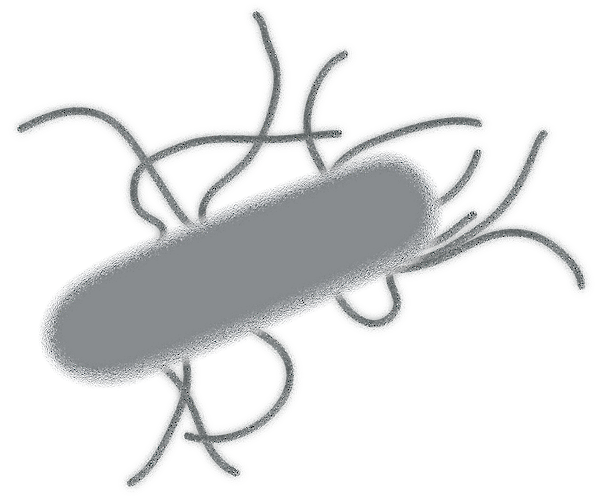
Salmonella diagnostics: Regular sampling for prophylaxis
The GflSalmoV prescribes sampling depending on the type of operation, number and age of the poultry. For this purpose, competent personnel (e.g. farm managers or veterinarians) take feces and litter material at the beginning, at the end or within the run. The samples are examined in officially accredited laboratories using prescribed methods. In addition to this legally required on-farm monitoring, it is advisable to examine further Salmonella samples. This applies above all to rearing and fattening, as it may still be possible to market the animals with the aid of suitable measures. In addition, the effectiveness and quality of the hygiene and management measures of the farm can be checked.
In laying hen husbandry, salmonella checks are mandatory every 15 weeks from the age of 24 weeks as part of food safety. Furthermore, according to §4 of the GflSalmoV, poultry farmers are obliged to report any suspicion of salmonella infection to the competent authority (e.g. the veterinary office).
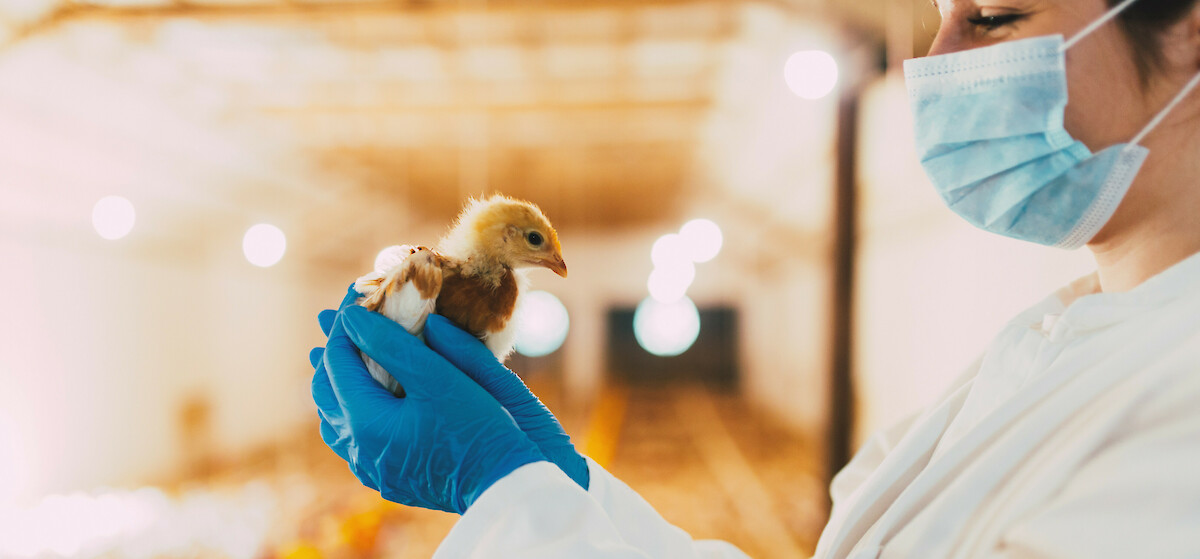
Salmonellosis prophylaxis: prevent entry, stop the spread
Strategies against salmonellosis have a dual objective: to prevent entry into the poultry flock and - if this has already occurred - to stop the spread of salmonella. The following overview lists measures that help with control and prophylaxis on farms.
1. Avoid a salmonella entry
Keep your poultry feed and litter stocks free of pests and wildlife. For example, completely covering the litter when storing it outdoors will help. In addition, never store poultry feed for longer than six weeks to avoid loss of quality. Acidifying the feed with formic acid lactic acid (AMS) can also prevent salmonella infestation.
In accordance with §2 of the GflSalmoV, our feed is examined for salmonella in a risk-oriented manner as part of our HACCP inspection plan (Hazard Analysis and Critical Control Points). These tests cover the receipt of raw materials, storage, processing and final loading. In this way, we achieve maximum safety for our poultry feeds.
Consider everything that enters the barn as a possible vector for salmonellosis on the farm. This applies to feed as well as occupational materials and bedding, but also to people. Keep visits to a minimum and completely avoid those that are not necessary. If a visit is unavoidable, always provide company-owned shoes and coveralls. If possible, also make sure to provide head coverings and disposable gloves.
Harmful rodents, wild birds or other animals such as farm dogs or cats should also be kept out of the coop. By inspecting the incoming chicks, you can check whether the poultry is already contaminated with salmonella and whether a reduction program may be necessary.
Hygiene on poultry farms is the be-all and end-all. Inside and outside the house, it is of central importance in the prevention of salmonella infestation. Cleaning and disinfection of materials and machines should be carried out properly after each run according to current specifications. When disinfecting, pay close attention to the instructions for the preparations to be used (exposure times, temperature range, etc.). Use these only in consultation with the veterinarian. In this way you can avoid the development of resistances by changing the preparations. Hygiene sluices between the stall compartments minimize the risk of contamination during the passage.
Ensure sufficient distance and spatial separation between stalls of different animal species (e.g. cattle and pigs). The same applies when keeping different groups of poultry with different ages and uses in order to avoid cross-contamination.
To prevent salmonella infestation, you should also always consider the stable environment: Pave paths and forecourts for better cleaning. Fence off the premises and keep the vegetation around the barn short. The latter prevents rodents or wild birds - which can introduce salmonella into the herd - from entering the barn.
2. Measures to be taken in the event of salmonella infestation
Depending on the salmonella category, the GflSalmoV prescribes a different procedure. Even the mere suspicion of a salmonella infection must be reported by the company.
-
If an infection with salmonella category 1 is confirmed by an official investigation, a culling of the entire flock and a blocking of the animal products for human consumption is required. The extent to which eggs or meat may still be marketed depends on the competent authority. In addition, affected farms must clean and disinfect their poultry houses and carry out control of rodents (e.g., mice and rats), insect pests (e.g., house flies and fruit flies or vinegar flies) and parasites (e.g., feather mites and red bird mites). Authorities do not lift the protective measures imposed until a final survey is conducted with negative results.
Read more about red bird mite control here.
-
Authorities can also order measures to reduce infestations in the event of infection with category 2 salmonella. This includes the presentation of a quality assurance plan to control an infestation of salmonella. The plan must include measures to control rodents, insect pests and parasites, as well as vaccination of the herd. However, the authority may also order evacuation or culling of the poultry flock in this case.
3. Vaccination of poultry against salmonella as a panacea?
In principle, vaccination is an effective protection against infection with Salmonella. Vaccination of pullets against Salmonella enteritidis and Salmonella typhimurium are even mandatory in breeding farms according to GflSalmoV. Vaccination can also be an additional preventive option for fattening poultry. In addition, authorities may order further vaccination (against category 2 Salmonella) if the initiated measures are not sufficient. According to the Poultry Salmonella Ordinance (GflSalmoV), farms are obliged to keep exact documentation of all vaccinations and to name all vaccines administered.
However, the salmonella vaccination only offers safety against certain strains of the rod-shaped bacteria. Thus, it does not provide 100% safety either. Furthermore, the antibody titer in poultry decreases with age. Thus, the risk of infection increases over time despite successful immunization. A longer keeping period - as it is more and more found especially in laying hens - would be an example for the reduction of the protection. Consequently, farm managers should never completely disregard entry reduction and prevention measures even after vaccination.
Conclusion - What to do against salmonella in poultry?
- Salmonella represents an enormous economic risk for poultry farms.
- As a zoonosis, salmonellosis is transmissible to humans and must be reported in accordance with infection protection laws.
- The "Poultry Salmonella Ordinance" (GflSalmoV) regulates the procedure for detecting and combating an infestation.
- Strategies against salmonella always aim at preventing an entry into the poultry flock. If this is not successful, measures should be taken to prevent spread.
- A repertoire of different measures to improve hygiene, storage and vaccination offer a possibility here.
Further information
Website of the Federal Institute for Risk Assessment (Bundesinstituts für Risikobewertung, BfR).
"Empfehlungen zur hygienischen Gewinnung von Geflügelfleisch" of the Federal Institute for Risk Assessment (Bundesinstituts für Risikobewertung, BfR).
Legal text of the "Verordnung zum Schutz gegen bestimmte Salmonelleninfektionen beim Haushuhn und bei Puten" (GflSalmoV) on the website www.gesetze-im-internet.de.
Guideline "Salmonellenmonitoring und -reduzierungsprogramm für die Geflügelfleischerzeugung" by QS Qualität und Sicherheit GmbH.
Image credits: © pressmaster – adobe.stock.com (Top-Slider) / © hedgehog94 – adobe.stock.com

